Abraliopsis morisii
Kotaro Tsuchiya and Richard E. YoungIntroduction
A. morisii is distributed widely in the tropical to warm temperate waters of the Atlantic Ocean. Females reach at least 39 mm ML.
Brief diagnosis:
An Abraliopsis (Abraliopsis) with ...
- clear strip of Median Mantle Sector indistinct in anterior 15-20% of the ventral mantle.
- dorsal flap on hectocotylus.
- 2nd Lateral Window Series present (at least by 25 mm ML).
- many red photophores in Lateral Head Sector.
- 14-22 hooks on arms IV.
Characteristics
- Tentacle clubs
- Bare strip ofMedian Mantle Sector indistinct in anterior 15-20% of the ML.
- Largest hooks of ventral series over 3 times length of counterparts of dorsal series and laterally compressed.
- Carpal flap and aboral keel well developed (="large").
- Bare strip ofMedian Mantle Sector indistinct in anterior 15-20% of the ML.
- Arms
- Arms IV relatively long; Arm length index for arm IV - ca.70-90.
- Arms with 14 - 22 hooks and suckers.
- Hectocotylus
- Hectocotylus with two different-sized flaps: long narrow proximal flap on the ventral margin and a short distal flap (about 1/3 lenght of ventral flap) on the dorsal margin.
- Modified portion with armature.
- Photophores
- Ocular photophores: 5 ocular photophores with end members about 1.5X diameter of adjacent photophores.
- Integumental photophores: Head and mantle with scattered pattern.
 Click on an image to view larger version & data in a new window
Click on an image to view larger version & data in a new window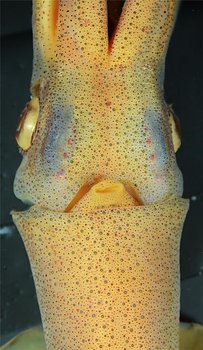
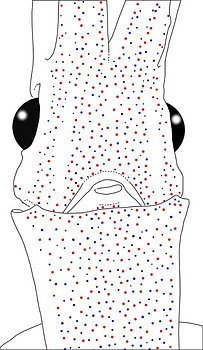
Figure. Ventral views of the integumental photophores of A. morisii, female, 35 mm ML, subtropical South Atlantic. Left - Photograph of the preserved squid. Right - Outline drawing from photograph with all integumental photophores represented by colored dots. Red dots - Complex photophores. Blue dots - Non-complex photophores. Images by R. Young.
More details of the integumental photophores can be found here.
- Measurements and counts: Not available.
Comments
See Abraliopsis (Abraliopsis) page for comparison with other species of the subgenus.
Nomenclature
This species was formerly called A. pfefferi Joubin, 1896. Bello (2005) after re-examining the original description of A. morisii, determined that discarding this name, which has precedence, due to problems with the original description, was a mistake and that the original discription was sufficient to identify the species. Unfortunately the type specimen appears to be lost. A. pfefferi, therefore, is a junior synonym of A. morisii.
Life history
Age and maturation
Based on statolith analyses, males mostly matured at 120-130 days and females at 150-160 days; minimum age at maturity is 105 days in males, 127 days in females (Arkhipkin, 1996).
Distribution
Geographical Distribution
Type locality: North Atlantic Ocean at 39°N, 20°W. This species is distributed in the tropical to warm temperate Atlantic Ocean, the Gulf of Mexico, and Mediterranean Sea (Nesis, 1982/87).
References
Bello, G. 2005. Abraliopsis morisii vs. Abraliopsis pfefferi (Cephalopoda: Enoploteuthidae): which is the right name? Journal of Conchology, 38 (5):561-565.
Arkhipkin, A.I. 1996. Age and growth of the squid Abraliopsis pfefferi (Oegopsida: Enoploteuthidae) from the central-east Atlantic based on the statolith microstructure. Scientia Marina 60:325-330.
Nesis, K. N. 1982. Abridged key to the cephalopod mollusks of the world's ocean. 385,ii pp. Light and Food Industry Publishing House, Moscow. (In Russian.). Translated into English by B. S. Levitov, ed. by L. A. Burgess (1987), Cephalopods of the world. T. F. H. Publications, Neptune City, NJ, 351pp.
Title Illustrations

| Scientific Name | Abraliopsis morisii |
|---|---|
| Location | North Atlantic, 43°N, 28°W |
| Comments | Photographed aboard the R/V G.O. SARS, during the MAR-ECO expedition 2004 |
| Specimen Condition | Fresh |
| View | Ventral |
| Image Use |
 This media file is licensed under the Creative Commons Attribution-NonCommercial License - Version 3.0. This media file is licensed under the Creative Commons Attribution-NonCommercial License - Version 3.0.
|
| Copyright |
©

|
About This Page

Tokyo University of Fisheries, Tokyo, Japan

University of Hawaii, Honolulu, HI, USA
Page copyright © 2013 and
 Page: Tree of Life
Abraliopsis morisii .
Authored by
Kotaro Tsuchiya and Richard E. Young.
The TEXT of this page is licensed under the
Creative Commons Attribution-NonCommercial License - Version 3.0. Note that images and other media
featured on this page are each governed by their own license, and they may or may not be available
for reuse. Click on an image or a media link to access the media data window, which provides the
relevant licensing information. For the general terms and conditions of ToL material reuse and
redistribution, please see the Tree of Life Copyright
Policies.
Page: Tree of Life
Abraliopsis morisii .
Authored by
Kotaro Tsuchiya and Richard E. Young.
The TEXT of this page is licensed under the
Creative Commons Attribution-NonCommercial License - Version 3.0. Note that images and other media
featured on this page are each governed by their own license, and they may or may not be available
for reuse. Click on an image or a media link to access the media data window, which provides the
relevant licensing information. For the general terms and conditions of ToL material reuse and
redistribution, please see the Tree of Life Copyright
Policies.
- Content changed 03 November 2013
Citing this page:
Tsuchiya, Kotaro and Richard E. Young. 2013. Abraliopsis morisii . Version 03 November 2013 (under construction). http://tolweb.org/Abraliopsis_morisii/19691/2013.11.03 in The Tree of Life Web Project, http://tolweb.org/




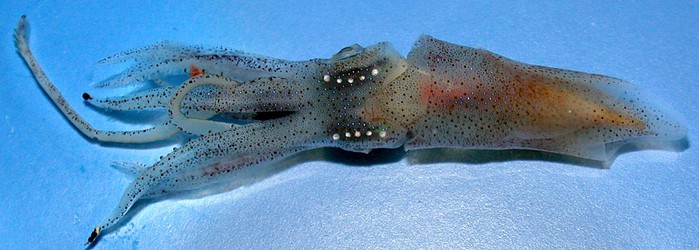


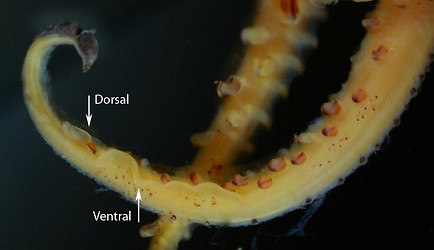

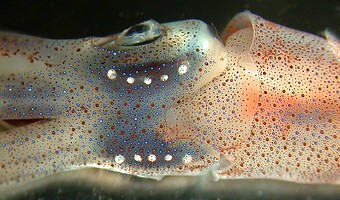



 Go to quick links
Go to quick search
Go to navigation for this section of the ToL site
Go to detailed links for the ToL site
Go to quick links
Go to quick search
Go to navigation for this section of the ToL site
Go to detailed links for the ToL site